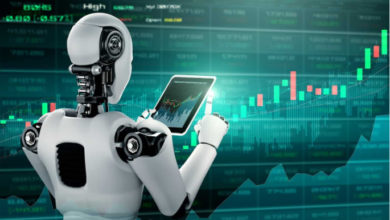Janitor AI: The Future of Artificial Intelligence and Automation 2024

Janitor AI has been transforming industries worldwide for the past decade. From healthcare to marketing, AI is powering automation and decision-making like never before. Among the emerging technologies that have gained attention in recent times, Janitor AI is making a remarkable impact. Although the term may sound simplistic, the technology behind it is far from ordinary. This article will delve deep into what Janitor AI is, how it works, its benefits, and its potential future applications.
- What is Janitor AI?
Artificial Intelligence (AI) has evolved into a catch-all term for various types of software and systems that replicate human tasks through computing power. as the name suggests, primarily focuses on managing and maintaining systems in an automated way, much like how a janitor would maintain a physical space. This AI system handles various behind-the-scenes operations that typically require manual labor, such as organizing data, cleaning systems, or maintaining software integrity.
1.1 The Origins of Janitor AI
The concept of Janitor AI came into the tech landscape as an extension of process automation and AI-based management tools. As more industries leaned into automation, the need to maintain and manage these automated systems without constant human intervention became apparent. Thus, emerged. The origins of this technology lie in the demand for high-efficiency systems that run with minimal human oversight, reducing the need for manual maintenance and system cleanups.
development can be traced back to the early 2010s when large-scale enterprise systems were first being introduced to AI for IT operations (AIOps). As artificial intelligence advanced, the AI community saw an opportunity to delegate repetitive and maintenance-heavy tasks to specialized AIs, resulting in the birth of what we now call Janitor AI.
1.2 Basic Functions of Janitor AI
At its core, Janitor AI performs several functions that would otherwise require human effort. For example, it can run regular system checks, delete outdated files, free up storage space, and monitor performance issues in real-time. Much like a physical janitor would clean up after hours, ensures that digital environments are cleaned up and maintained to avoid disruptions or inefficiencies.
The most common use of is in IT management, where it scans databases, removes unnecessary data, and ensures that software and systems are updated. This not only saves time but also prevents technical glitches or system crashes by proactively managing and maintaining digital ecosystems.
1.3 Why is it Called Janitor AI?
The name Janitor AI is both symbolic and functional. The “janitor” aspect reflects the AI’s job of cleaning and maintaining, but instead of handling physical spaces, the takes care of digital systems and processes. Much like a janitor keeps a building clean and operational, ensures that virtual systems run smoothly without clutter or disorganization.
While the name might seem light-hearted, the work that performs is vital for large-scale automation systems. It is called because its function closely mirrors the work of a human janitor, but in the digital world, ensuring that everything behind the scenes is spotless and operational.
- How Does Janitor AI Work?
Janitor AI is not just a simple bot that performs tasks; it is a sophisticated machine-learning system capable of complex operations. Understanding how works requires knowledge of its core components, the algorithms that drive it, and the role of machine learning in making the system adaptive and efficient.
2.1 Core Components of Janitor AI
At its core, Janitor AI consists of three key components:
- Data Analysis Engine – This component is responsible for scanning, sorting, and interpreting data. The data analysis engine identifies redundancies and flags any inconsistencies or potential areas that need cleaning.
- Task Automation Module – This part of takes care of the actual process of automating various tasks. For instance, it can schedule regular system cleanups, automate performance checks, and delete obsolete files without human intervention.
- Machine Learning Algorithms – The third critical component allows the AI to learn from past tasks and become more efficient over time. It adapts to the system’s needs and adjusts its operations based on user feedback or system requirements.
2.2 The Algorithms Behind Janitor AI
The real magic of Janitor AI lies in its algorithms. These are what allow it to operate autonomously and intelligently. The algorithms are designed to process large amounts of data quickly, make decisions based on pre-programmed rules, and adapt over time. uses deep learning algorithms to recognize patterns in system behavior and predict when maintenance tasks need to be carried out.
In addition to predictive analytics, uses natural language processing (NLP) algorithms to interpret human instructions. This allows users to communicate with the AI system in plain language, making it more user-friendly. The combination of machine learning and NLP creates an AI that is not only powerful but also intuitive and easy to integrate into everyday workflows.
2.3 The Role of Machine Learning in Janitor AI

Machine learning is crucial to the functioning of Janitor AI. Over time, the AI system becomes smarter and more efficient, learning from the tasks it performs and the systems it interacts with. This makes more adaptable than traditional automation tools, which typically rely on static programming.
As Janitor AI encounters new challenges, it refines its understanding of what “cleaning” and “maintaining” entail for different systems. For instance, it might notice that certain files or programs need to be monitored more frequently than others or that specific processes require additional resources. This level of adaptability ensures that remains useful across various industries and applications.
Janitor AI in Automation
Automation is the key to efficiency in modern business, and takes this one step further by automating not just tasks but also their maintenance and upkeep. While many automation systems handle repetitive tasks, they still require manual intervention for updates, error management, or system cleanup. Janitor AI fills this gap by ensuring that the automation system itself remains fully functional and error-free.
3.1 Replacing Routine Tasks
One of the primary benefits of Janitor AI is its ability to replace routine, time-consuming tasks that often fall on human workers. Tasks like file cleanup, memory optimization, and system updates are critical for keeping systems running smoothly but are often overlooked. handles these tasks with precision, ensuring that systems are constantly optimized without the need for human oversight.
In an office setting, for example, can automatically delete outdated documents, organize digital folders, and ensure that software remains up to date. This reduces the workload on employees and allows them to focus on more creative and strategic tasks.
3.2 Human Labor Augmentation
Janitor AI does not aim to replace human workers but to augment them. While it takes over the tedious maintenance tasks, humans are freed up to focus on more complex problems that require critical thinking. By acting as a digital janitor, this AI reduces the burden on IT professionals, enabling them to manage larger and more complex systems without getting bogged down by routine maintenance tasks.
is particularly useful in industries where IT departments are often overwhelmed by the volume of maintenance tasks they need to handle. By automating these tasks, companies can better allocate their human resources toward innovation and strategic initiatives.
3.3 Integrating Janitor AI into Workflows
Integrating Janitor AI into an existing workflow is relatively straightforward. It works in tandem with other automation tools and software, ensuring that systems remain clean and functional. can be customized to suit different environments, making it a versatile tool that can be applied to a range of industries.
For example, in a manufacturing setting, Janitor AI could manage the maintenance of automated production lines, ensuring that machines are regularly updated and that any potential issues are flagged before they cause disruptions. In an office environment, it could automate the maintenance of computer systems, ensuring that employees never have to deal with system crashes or performance issues.
- Benefits of Using Janitor AI
The benefits of using Janitor AI are manifold, ranging from increased efficiency to cost savings. By automating routine tasks and ensuring that systems remain clean and functional, can help businesses of all sizes operate more smoothly and efficiently.
4.1 Increased Efficiency and Productivity
The most obvious benefit of Janitor AI is the increase in efficiency and productivity. By automating maintenance tasks, ensures that systems are always running at their optimal performance levels. This reduces downtime and allows employees to focus on more valuable tasks, such as innovation and problem-solving.
In industries where time is money, such as manufacturing or IT, the ability to automate routine maintenance can significantly improve productivity. ensures that systems are always ready to go, with minimal human intervention.
4.2 Reduced Human Error
One of the major issues with manual maintenance tasks is the potential for human error. Whether it’s accidentally deleting an important file or forgetting to run a system update, human mistakes can be costly. Janitor AI eliminates this risk by automating these tasks, ensuring that they are completed correctly every time.
ability to operate autonomously means that it can catch potential issues before they become problems. For instance, it can flag corrupted files or identify system vulnerabilities before they lead to system failures.
4.3 Cost-Effectiveness
Janitor AI can also help reduce operational costs. By automating routine maintenance tasks, businesses can reduce their reliance on human labor and minimize the risk of costly errors. Additionally, ensures that systems are always running efficiently, which can reduce energy costs and extend the lifespan of hardware and software.
Over time, the cost savings from using can be substantial, particularly for businesses with large-scale IT operations. By reducing the need for manual maintenance and minimizing system downtime, can help companies save both time and money.
- Applications of Janitor AI
Janitor AI is versatile enough to be used across various industries. From IT to healthcare, its ability to maintain and optimize systems makes it a valuable tool for businesses looking to improve efficiency and reduce manual workload.
5.1 Janitor AI in Facility Management
One of the most promising applications of Janitor AI is in facility management. In large buildings, routine maintenance tasks such as cleaning, organizing, and managing utilities are essential but time-consuming. can automate these tasks by monitoring systems, identifying issues, and ensuring that everything runs smoothly.
For example, could be used in smart buildings to manage heating, ventilation, and air conditioning (HVAC) systems. It can monitor usage patterns, optimize energy efficiency, and ensure that systems are maintained regularly.
5.2 Healthcare Applications
In healthcare, Janitor AI can play a crucial role in maintaining medical systems and ensuring that they are always ready for use. Healthcare facilities rely on numerous automated systems, from patient management software to diagnostic machines, all of which require regular maintenance.
By automating routine maintenance tasks, can reduce the burden on healthcare professionals, allowing them to focus on patient care. It can also help ensure that medical systems are always operational, reducing the risk of system failures during critical moments.
5.3 Role in Cybersecurity
Janitor AI can also be used to maintain cybersecurity systems. Cybersecurity is a growing concern for businesses of all sizes, and maintaining secure systems requires constant monitoring and updates. can automate many of these tasks, ensuring that systems are always up to date and that potential vulnerabilities are identified before they can be exploited.
For example, could monitor firewall logs, identify suspicious activity, and automatically update security protocols as needed. By automating these tasks, can help businesses stay ahead of cyber threats without requiring constant human intervention.
- Challenges Facing Janitor AI
While Janitor AI offers numerous benefits, it is not without its challenges. From technical issues to ethical concerns, there are several obstacles that need to be addressed before can reach its full potential.
6.1 Technical Challenges
One of the biggest challenges facing Janitor AI is the technical complexity of the systems it manages. While AI is designed to be adaptable, there are limits to what it can do. For instance, certain systems may require specialized knowledge or manual intervention that cannot provide.
Additionally, as systems become more complex, the risk of errors increases. relies on algorithms to make decisions, but these algorithms are not infallible. There is always the potential for glitches or unintended consequences when relying on automated systems to manage complex processes.
6.2 Ethical Concerns
There are also ethical concerns surrounding the use of Janitor AI. As with any AI system, there is the risk of job displacement. By automating routine tasks, could potentially reduce the need for human labor, particularly in industries where maintenance and upkeep are essential.
Furthermore, the use of AI raises concerns about data privacy and security. needs access to system information in order to perform its tasks, but this also makes it a potential target for hackers or malicious actors.
6.3 Adoption and Training

Another challenge is the adoption of Janitor AI in industries that may be resistant to change. Integrating AI systems into existing workflows can be difficult, particularly for businesses that are not tech-savvy. Additionally, employees may need to be trained on how to use effectively, which could require significant time and resources.
Despite these challenges, the potential benefits of Janitor AI far outweigh the drawbacks. As AI technology continues to evolve, it is likely that many of these obstacles will be addressed, making even more effective in the future.
- The Future of Janitor AI
The future of Janitor AI looks promising, with numerous innovations on the horizon. As AI technology continues to evolve, is likely to become even more powerful and versatile, opening up new possibilities for automation and system maintenance.
7.1 Innovations on the Horizon
One of the most exciting developments in Janitor AI is the integration of advanced machine learning algorithms. These algorithms will allow the AI to become even more efficient, learning from its interactions with systems and users to provide better maintenance and optimization.
Additionally, there is potential for to integrate with other AI systems, creating a fully automated ecosystem that manages all aspects of a business’s operations. This could include everything from routine maintenance to predictive analytics, allowing businesses to operate more smoothly and efficiently than ever before.
7.2 Expanding into New Industries
While Janitor AI is currently used primarily in IT and facility management, there is potential for it to expand into other industries. For example, could be used in agriculture to maintain automated farming systems, or in logistics to manage supply chains.
As more industries adopt automation, the need for systems like will only increase. By providing a reliable and efficient way to manage and maintain automated systems, can help businesses in all sectors operate more smoothly.
7.3 Janitor AI and Society
The rise of Janitor AI also raises important questions about its impact on society. While it has the potential to improve efficiency and reduce costs, it could also lead to job displacement in certain industries. As with any AI system, it is important to strike a balance between leveraging the benefits of automation and ensuring that workers are not left behind.
In the long term, could become a standard tool in businesses of all sizes, helping to maintain and optimize systems in a wide range of industries. By automating routine tasks, allows humans to focus on more creative and strategic work, leading to a more productive and innovative workforce.
- Frequently Asked Questions (FAQs)
What is Janitor AI?
Janitor AI is a specialized form of artificial intelligence designed to maintain and optimize digital systems. It automates routine maintenance tasks such as cleaning up files, monitoring system performance, and ensuring that software is up to date.
How does Janitor AI work?
Janitor AI uses machine learning algorithms to scan, analyze, and maintain digital systems. It automates tasks like system cleanups, performance checks, and updates, ensuring that systems run efficiently without requiring manual intervention.
What are the benefits of using Janitor AI?
The benefits of using Janitor AI include increased efficiency, reduced human error, and cost savings. By automating routine maintenance tasks, allows businesses to focus on more valuable work and reduces the risk of system failures or errors.
Is Janitor AI expensive?
The cost of implementing Janitor AI depends on the size and complexity of the systems it is designed to maintain. However, the cost savings from reduced labor and increased efficiency often outweigh the initial investment.
What industries can benefit from Janitor AI?
Janitor AI can be used in a wide range of industries, including IT, healthcare, manufacturing, facility management, and cybersecurity. Any business that relies on automated systems can benefit from using .
Will Janitor AI replace human jobs?
While Janitor AI automates routine tasks, its goal is to augment human labor rather than replace it. By handling maintenance tasks, frees up employees to focus on more complex and creative work.
- Conclusion
Janitor AI represents a significant step forward in the world of automation and artificial intelligence. By automating routine maintenance tasks, it allows businesses to operate more efficiently, reducing costs and minimizing the risk of human error. While there are challenges to its adoption, the potential benefits of are immense, making it a valuable tool for businesses in a wide range of industries.
As AI technology continues to evolve, is likely to become even more powerful and versatile, offering new possibilities for system maintenance and optimization. Whether you are in IT, healthcare, or facility management, has the potential to transform the way you do business.



